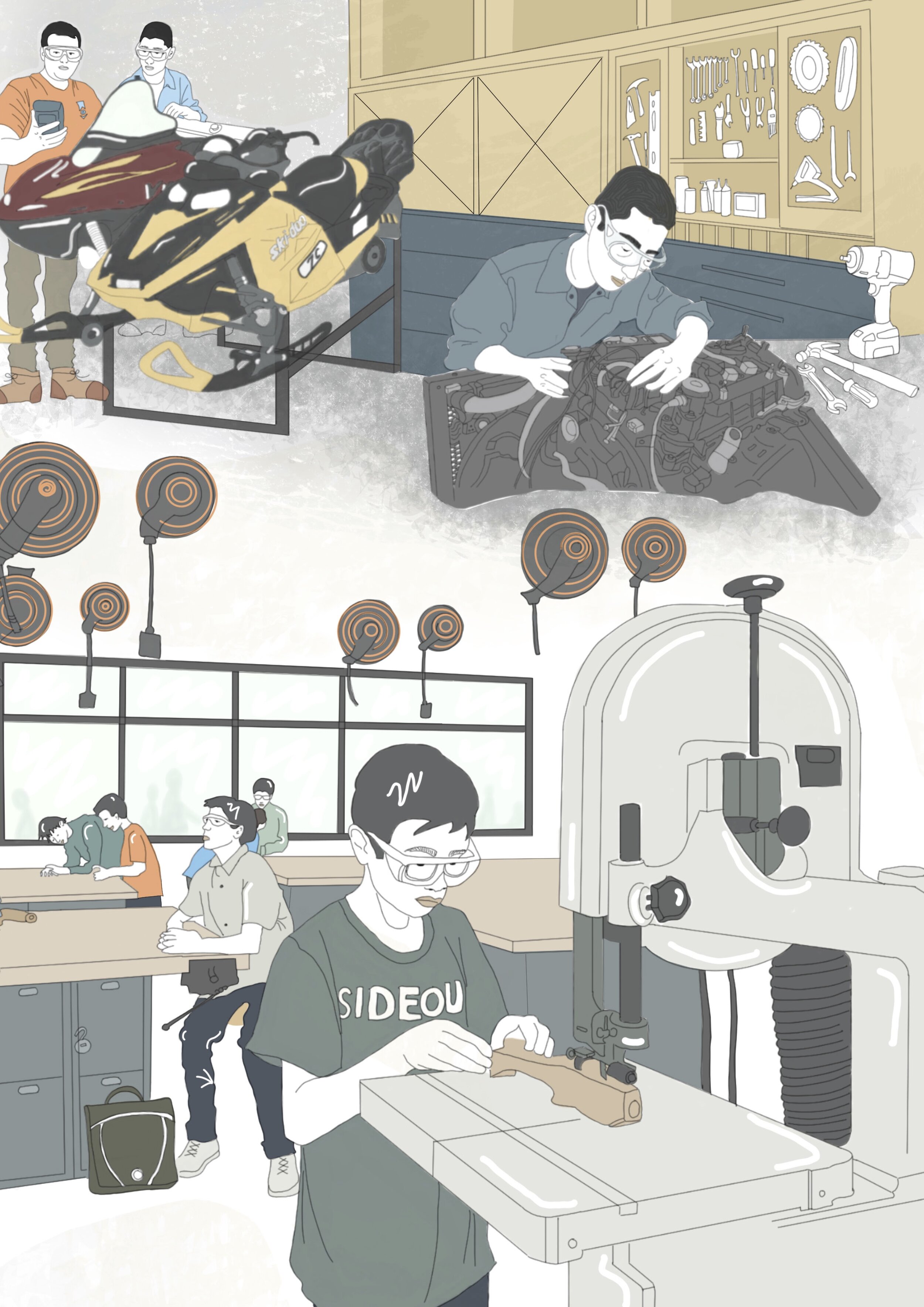Snow desert, arctic tundra and icy winds: Nunavik is a lesser-known region in the far north of Quebec. Laid out on a territory of 507,000 km2, about 1,850 km from Montreal, it is made up of 14 small Inuit villages. Around 14,000 people live in Nunavik and face major challenges on a daily basis. High drop-out rates, difficult access to water and electricity, a failing computer network, food insecurity, and a housing crisis shape their way of life. Remoteness is the main culprit in the adversity that Nordic societies face. Considering these local concerns, what future can we imagine for these isolated communities? What solutions are possible? First, we must recognize that when basic needs, such as accommodation or daily meals, are not met, it becomes more difficult to set goals for the future and to find motivation to evolve in sustainable ways. These communities are young and vibrant, but currently find themselves in an unstable and unhealthy environment that prevents them from getting involved in their community. Sustainability and the environment are important issues, but they quickly take a back seat when it comes to survival. With the help of local actors like mining and government institutions, it is possible to give communities the tools to improve the current system while promising opportunities for the future. Several studies show that the integration of new technologies can stimulate interest in education as it would allow for communities to take over learning methods which would create a feeling of independence and validation. Self-determination is an important value among the Inuit who often want to find the solutions to the problems of their community themselves. Therefore, integrating 4.0 technologies and offering training in remote areas like Nunavik could bring about a real change in the quality of life of local populations. In addition to motivating the new generation to educate themselves and to get involved in their community, it would also break their dependency from the South creating local and sustainable self-sufficiency. The urgency to act upon the glaring needs of this region of Quebec has been proven decades ago. However, the problem is still very present and is aggravating with an increase in population and global warming. It has become necessary to act in collaboration with the communities as this situation concerns us all. Together, let's imagine a sustainable Inuit future that celebrates local culture and values.





